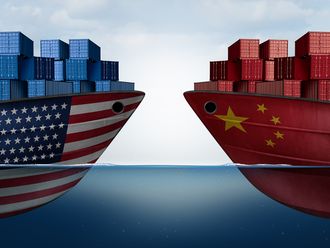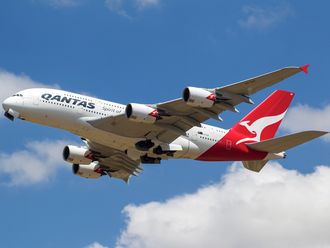
You don’t have to be Einstein to know that most things in life are relative, and depend on a benchmark, your frame of reference, for interpretation.
An easy example would be that an investor’s sense of well-being in the event of having made a 20 per cent return on a chosen stock will depend on whether the market as a whole has also risen 20 per cent, or 40 per cent, or stayed still, or perhaps dropped. Has “alpha” (essentially outperformance), or merely “beta” (mere volatility) been achieved?
In normal times the usual assumption would be to want to be better off in the future than now, and over the longer term that’s still a reasonable expectation, even in a dysfunctional economic world.
Even among the most sophisticated players, though, such is the fear factor about the short term right now that even modestly negative returns — not just in real, inflation-adjusted terms but even in nominal terms — can appear acceptable, when the alternative to a capital loss known in advance is the risk of steeper loss. That’s the point reached today in certain core European credit markets, with the eurozone’s growing threat of disintegration a menacing risk, and not only for the EU.
It’s a stance which shows both awareness and imagination as well as the dire state of international conditions, wherein key Western economies seem stuck, and the much-vaunted Asian economies have travelled so fast that they too are threatened with some form of derailment.
Investors in gold these days might feel that their asset is going nowhere fast, considering the global dangers that should be promoting their cause. The metal is quoted in US dollars, typically, and on that basis has kept to a roughly sideways $1550-1650 band per ounce for months now.
But when analysts describe gold as range-bound, they are talking specifically in dollar terms – and, with exchange pegs in place, for Gulf-based investors that’s a fair way of looking at it.
For the expats of the region, however, it’s not quite the same. For example, since the dollar itself has been rising, noticeably against the euro, it means gold has risen in euro terms. That’s true also relative to the Indian rupee, which has fallen sharply against the dollar (see chart).
All that means is that there’s an exchange rate to consider. So far, so rudimentary, some might say.
But any discussion on the price outlook has then to take into account that price itself tends to affect demand, and therefore ultimately price again. It’s fairly straightforward to note that the demand for gold will ease if a key component of demand, namely from India, is finding it pricier in local terms, regardless of the dollar quote. (Gulf oil producers are only too well aware of the vagaries of currency fluctuation on the rest of the consuming world’s appetite for a commodity, and ability to pay.)
Over time the challenging price arising in currencies apart from that which is usually quoted will check the dollar price too.
As Jeffrey Rhodes, CEO and global head of precious metals at INTL Commodities DMCC, has put it, “The weakness of the rupee is countering the fall in the dollar price of gold and is likely to act as a drag on demand in the world’s biggest market … the key to gold demand in India is the price in rupee terms.”
Those basic dynamics, though, get more complicated when gold and the dollar have their own independent relationship based not on the supply of and demand for the commodity itself but separately evolving drivers in the current financial world, which is currently tense, stretched, verging on fraught.
The US dollar, representing a suffering domestic economy, and itself previously ailing, has been at the fulcrum of the risk-on/risk-off trading environment that has become in-built since the financial crisis struck.
The euro, previously impervious to the threat of the eurozone’s innate fault-lines, is shaking to the rumblings of a pending earthquake. The yen, again exuding relative fortitude, masks another economy whose merits are slipping.
Gold, having come into its element versus these paper alternatives, is the vehicle both of cynical anticipation and of panic. Its buyers may fear either deflation (and economic ruin) or inflation (as the authorities’ policy pre-emption or reaction to that).
Recently the metal has appeared to settle, as it seemed the world might muddle through. But, again, that’s in dollar terms.
There’s a mountain, in fact mountain range, of knowledge and conjecture on both gold and the dollar, their underpinnings and forecast trends.
But could it be simply that, far from the apparent calm that gold seems to show in relation to the dollar, in fact tension is rising, and the two benchmarks are actually competing, to no great net effect, for safe-haven status? Could be a storm brewing again.












